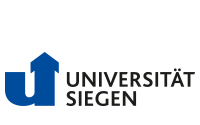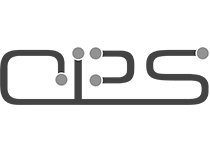Kevin Krings

E-Mail: kevin.krings(at)uni-siegen.de
Raum: US-D (Ludwig-Wittgenstein-Haus, Campus Unteres Schloss)
Telefon: +49 (0) 271 / 740
Sprechstunde: Nach Vereinbarung
Vita
Kevin Krings studierte an der Universität Siegen den Bachelorstudiengang Wirtschaftsinformatik und setzte das Studium, nach seinem Abschluss 2018, im Masterstudiengang Wirtschaftsinformatik weiter fort.
Neben dem Studium war er als Werksstudent im Bereich der Softwareentwicklung und Beratung bei der i-soft GmbH in Siegen tätig und durchlief zusätzlich eine Weiterbildung als Ausbilder bei der IHK Siegen. Bereits vor seinem Studium absolvierte er eine Berufsausbildung als Fachinformatiker Anwendungsentwicklung bei der Viega GmbH & Co.KG in Attendorn und arbeitete noch weitere fünfzehn Monate bei dem Unternehmen als Software Entwickler.
Seit Juni 2020 ist Kevin wissenschaftlicher Mitarbeiter am Lehrstuhl für Cyber-Physische Systeme. Sein aktueller Aufgabenschwerpunkt ist die Unterstützung und Umsetzung des Forschungsprojektes „Rendezfood“, welches mit Hilfe von sozialen, ortsbasierten und spielerischen Ansätzen ein neuartiges Werbekonzept umsetzen soll. Er war bereits im Rahmen seiner Projekt- und Masterarbeit in dem Projekt involviert.
Zu seinen primären Forschungsinteressen zählt das End-User Development für Trendtechnologien wie Augmented Reality, Conversational Agents und Machine Learning, sowie die Aneignung von Cyber-Physischen Systemen in unterschiedlichen Bereichen.
Publikationen
2025
-
Taugerbeck, S., Bohn, N. S., Ahmadi, M., Krings, K. & Wulf, V. (2025)From Crisis to Resilience: Design Spaces for Crisis-Responsive Infrastructuring in Adapting Remote Work Practices in a Video Game Development Company During COVID-19 (and Beyond)
IN Proc. ACM Hum.-Comput. Interact., Vol. 9, Pages: CSCW012:1–CSCW012:38 doi:10.1145/3710910
[BibTeX] [Abstract] [Download PDF]The COVID-19 pandemic triggered an unprecedented shift from office-based to remote work, catching many organizations off guard. This paper examines a German video game development company’s adaptation to enforced working from home during the first lockdown. Through remote interviews with 20 employees from various departments, we identify technological, physical, organizational, and socio-psychological challenges. To address these, we devised a Crisis-Responsive Infrastructuring framework, blending socio-technical perspectives with strategies to enhance organizational adaptability. Our research highlights the crucial and reassuring role of Information and Communication Technology in maintaining productivity and social connectivity and reshaping work dynamics and infrastructure. Further, we emphasize the importance of flexible work concepts, such as hybrid models and decentralized organizations, in fostering resilience. Finally, by advocating for adaptive infrastructures that support remote work during crises and beyond, we aim to enrich the discourse on modern work practices and offer a systematic approach to strengthening organizational resilience.
@article{taugerbeck_crisis_2025, title = {From {Crisis} to {Resilience}: {Design} {Spaces} for {Crisis}-{Responsive} {Infrastructuring} in {Adapting} {Remote} {Work} {Practices} in a {Video} {Game} {Development} {Company} {During} {COVID}-19 (and {Beyond})}, volume = {9}, shorttitle = {From {Crisis} to {Resilience}}, url = {https://dl.acm.org/doi/10.1145/3710910}, doi = {10.1145/3710910}, abstract = {The COVID-19 pandemic triggered an unprecedented shift from office-based to remote work, catching many organizations off guard. This paper examines a German video game development company's adaptation to enforced working from home during the first lockdown. Through remote interviews with 20 employees from various departments, we identify technological, physical, organizational, and socio-psychological challenges. To address these, we devised a Crisis-Responsive Infrastructuring framework, blending socio-technical perspectives with strategies to enhance organizational adaptability. Our research highlights the crucial and reassuring role of Information and Communication Technology in maintaining productivity and social connectivity and reshaping work dynamics and infrastructure. Further, we emphasize the importance of flexible work concepts, such as hybrid models and decentralized organizations, in fostering resilience. Finally, by advocating for adaptive infrastructures that support remote work during crises and beyond, we aim to enrich the discourse on modern work practices and offer a systematic approach to strengthening organizational resilience.}, number = {2}, urldate = {2025-05-13}, journal = {Proc. ACM Hum.-Comput. Interact.}, author = {Taugerbeck, Sebastian and Bohn, Nino S. and Ahmadi, Michael and Krings, Kevin and Wulf, Volker}, month = may, year = {2025}, pages = {CSCW012:1--CSCW012:38}, } -
Krings, K., Bohn, N. S., Sauter, L. M. & Ludwig, T. (2025)Beyond Usability: Introducing Wellbeing-Driven End-User Development Design
End-User Development. Cham, Publisher: Springer Nature Switzerland, Pages: 185–204 doi:10.1007/978-3-031-95452-8_12
[BibTeX] [Abstract]End-User Development (EUD) empowers non-programmers to create, adapt, and extend digital tools according to their needs. Traditional research on EUD has primarily focused on usability and efficiency, often overlooking dimensions of wellbeing and user engagement. While frameworks such as meta-design advocate for transformative potentials beyond mere usability, explicit integration of wellbeing remains insufficiently explored. To address this research gap, this paper proposes a novel conceptual methodology that focuses on wellbeing aspects in EUD components. Drawing from an established wellbeing-driven design philosophy, we emphasize designing tangible interactive artifacts that foster positive user experiences. Building on the novel construct EUDability, we introduce an extended version called xEUDability and demonstrate how it enriches existing methodologies by integrating Design Thinking skills. This extended framework offers a robust foundation for the systematic assessment and improvement of EUD tools, prioritizing sustained positive experiences and meaningful user interactions.
@inproceedings{krings_beyond_2025, address = {Cham}, title = {Beyond {Usability}: {Introducing} {Wellbeing}-{Driven} {End}-{User} {Development} {Design}}, isbn = {978-3-031-95452-8}, shorttitle = {Beyond {Usability}}, doi = {10.1007/978-3-031-95452-8_12}, abstract = {End-User Development (EUD) empowers non-programmers to create, adapt, and extend digital tools according to their needs. Traditional research on EUD has primarily focused on usability and efficiency, often overlooking dimensions of wellbeing and user engagement. While frameworks such as meta-design advocate for transformative potentials beyond mere usability, explicit integration of wellbeing remains insufficiently explored. To address this research gap, this paper proposes a novel conceptual methodology that focuses on wellbeing aspects in EUD components. Drawing from an established wellbeing-driven design philosophy, we emphasize designing tangible interactive artifacts that foster positive user experiences. Building on the novel construct EUDability, we introduce an extended version called xEUDability and demonstrate how it enriches existing methodologies by integrating Design Thinking skills. This extended framework offers a robust foundation for the systematic assessment and improvement of EUD tools, prioritizing sustained positive experiences and meaningful user interactions.}, language = {en}, booktitle = {End-{User} {Development}}, publisher = {Springer Nature Switzerland}, author = {Krings, Kevin and Bohn, Nino S. and Sauter, Louisa M. and Ludwig, Thomas}, editor = {Santoro, Carmen and Schmidt, Albrecht and Matera, Maristella and Bellucci, Andrea}, year = {2025}, keywords = {Socio-technical design, End-User Development, Methodology, Design for Wellbeing, Design Thinking, EUDability}, pages = {185--204}, }
2023
-
Krings, K., Bohn, N. S., Hille, N. A. L. & Ludwig, T. (2023)“What if everyone is able to program?” – Exploring the Role of Software Development in Science Fiction
Proceedings of the 2023 CHI Conference on Human Factors in Computing Systems. Hamburg Germany, Publisher: ACM, Pages: 1–13 doi:10.1145/3544548.3581436
[BibTeX] [Download PDF]@inproceedings{krings_what_2023, address = {Hamburg Germany}, title = {“{What} if everyone is able to program?” – {Exploring} the {Role} of {Software} {Development} in {Science} {Fiction}}, isbn = {978-1-4503-9421-5}, shorttitle = {“{What} if everyone is able to program?}, url = {https://dl.acm.org/doi/10.1145/3544548.3581436}, doi = {10.1145/3544548.3581436}, language = {en}, urldate = {2023-04-21}, booktitle = {Proceedings of the 2023 {CHI} {Conference} on {Human} {Factors} in {Computing} {Systems}}, publisher = {ACM}, author = {Krings, Kevin and Bohn, Nino S. and Hille, Nora Anna Luise and Ludwig, Thomas}, month = apr, year = {2023}, pages = {1--13}, }
2022
-
Krings, K., Weber, P., Jasche, F. & Ludwig, T. (2022)FADER: An Authoring Tool for Creating Augmented Reality-Based Avatars from an End-User Perspective
IN Mensch und Computer 2022 – Tagungsband doi:10.1145/3543758.3543778
[BibTeX] [Abstract] [Download PDF]Although augmented reality (AR) is becoming more common in our society, there are few specialized end-user tools for appropriate AR content creation. Most tools are focused on creating entire 3D applications or require extensive knowledge in programming and 3D modeling. With reference to End-User Development (EUD), we present a design case study for an end-user-friendly authoring tool that allows domain experts to create individual AR avatars in the field of Human-Food Interaction. After reviewing current approaches and design guidelines, we designed and implemented FADER, a web-based tool for creating AR-based food avatars. Our evaluation shows that playful design fosters immersion, and that abstract placeholders and highly simplified controls empower non-developers to create AR content. Our study contributes to a better understanding of end-user needs and practices during the AR creation process and informs the design of future AR authoring tools.
@article{krings_fader_2022, title = {{FADER}: {An} {Authoring} {Tool} for {Creating} {Augmented} {Reality}-{Based} {Avatars} from an {End}-{User} {Perspective}}, shorttitle = {{FADER}}, url = {http://dl.gi.de/handle/20.500.12116/39249}, doi = {10.1145/3543758.3543778}, abstract = {Although augmented reality (AR) is becoming more common in our society, there are few specialized end-user tools for appropriate AR content creation. Most tools are focused on creating entire 3D applications or require extensive knowledge in programming and 3D modeling. With reference to End-User Development (EUD), we present a design case study for an end-user-friendly authoring tool that allows domain experts to create individual AR avatars in the field of Human-Food Interaction. After reviewing current approaches and design guidelines, we designed and implemented FADER, a web-based tool for creating AR-based food avatars. Our evaluation shows that playful design fosters immersion, and that abstract placeholders and highly simplified controls empower non-developers to create AR content. Our study contributes to a better understanding of end-user needs and practices during the AR creation process and informs the design of future AR authoring tools.}, language = {en}, urldate = {2022-09-12}, journal = {Mensch und Computer 2022 - Tagungsband}, author = {Krings, Kevin and Weber, Philip and Jasche, Florian and Ludwig, Thomas}, month = sep, year = {2022}, note = {Accepted: 2022-08-31T09:43:01Z Publisher: ACM}, keywords = {rendezfood}, }
2021
-
Weber, P., Krings, K., Nießner, J., Brodesser, S. & Ludwig, T. (2021)FoodChattAR: Exploring the Design Space of Edible Virtual Agents for Human-Food Interaction
Designing Interactive Systems Conference 2021. New York, NY, USA, Publisher: Association for Computing Machinery, Pages: 638–650 doi:10.1145/3461778.3461998
[BibTeX] [Abstract] [Download PDF]There has been recent criticism from researchers towards simple replication of traditional role models in the design of virtual agents and robots, and a call for new forms of interaction and communication with technology. By exploring the field of Human-Food interaction (HFI) – a sub-area of Human-Computer Interaction (HCI) which aims to investigate the diversity of ways people interact with food – we therefore specifically examine the design space of edible anthropomorphic virtual agents (EAVAs). To understand human-to-food interactive communication, we conducted an interview study with 19 participants, followed by a co-design workshop on the design of conversational agents for personified food. Based on the results, we implemented a prototype called FoodChattAR that employs augmented reality and chatbots to interact and communicate with food. Our evaluation with 21 participants shows that FoodChattAR turns eating into fun, while at the same time the food conveys relevant societal facts about itself. We contribute to the field of HCI by introducing EAVAs as a novel human-to-food interaction.
@inproceedings{weber_foodchattar_2021, address = {New York, NY, USA}, series = {{DIS} '21}, title = {{FoodChattAR}: {Exploring} the {Design} {Space} of {Edible} {Virtual} {Agents} for {Human}-{Food} {Interaction}}, isbn = {978-1-4503-8476-6}, shorttitle = {{FoodChattAR}}, url = {https://doi.org/10.1145/3461778.3461998}, doi = {10.1145/3461778.3461998}, abstract = {There has been recent criticism from researchers towards simple replication of traditional role models in the design of virtual agents and robots, and a call for new forms of interaction and communication with technology. By exploring the field of Human-Food interaction (HFI) – a sub-area of Human-Computer Interaction (HCI) which aims to investigate the diversity of ways people interact with food – we therefore specifically examine the design space of edible anthropomorphic virtual agents (EAVAs). To understand human-to-food interactive communication, we conducted an interview study with 19 participants, followed by a co-design workshop on the design of conversational agents for personified food. Based on the results, we implemented a prototype called FoodChattAR that employs augmented reality and chatbots to interact and communicate with food. Our evaluation with 21 participants shows that FoodChattAR turns eating into fun, while at the same time the food conveys relevant societal facts about itself. We contribute to the field of HCI by introducing EAVAs as a novel human-to-food interaction.}, urldate = {2021-07-05}, booktitle = {Designing {Interactive} {Systems} {Conference} 2021}, publisher = {Association for Computing Machinery}, author = {Weber, Philip and Krings, Kevin and Nießner, Julia and Brodesser, Sabrina and Ludwig, Thomas}, month = jun, year = {2021}, keywords = {Human-Food Interaction, rendezfood, Conversational Agents, Anthropomorphism, Augmented Food, Edible Anthropomorphic Virtual Agents, Virtual Agents}, pages = {638--650}, }



